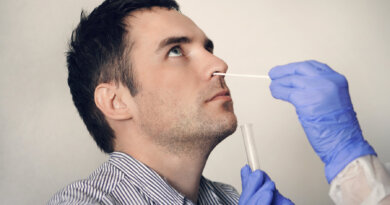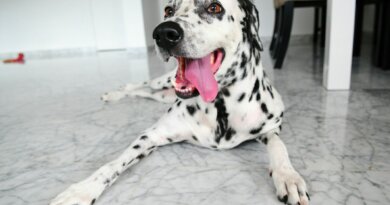Swimmer Puppy Syndrome: New Insights in Newborn Puppy Care- Dr. Emmanuel Fontaine
Recently, I came across a scientific paper on a newborn puppy condition that captivated my interest. It was about a disorder named Swimmer Puppy Syndrome, something I haven’t mentioned for a while in my presentations on newborn puppy care… and it was, I find, a great reminder! It actually made me think of all those new approaches we now have in this field… and it struck me how advancements in canine neonatology are continuously shedding new light on such conditions I thought we already have completely visited. So this newfound knowledge inspired me to write about Swimmer Puppy Syndrome, aiming to share insights and innovative ideas on how to better approach and manage this condition in this day and age.
- 1. What is Swimmer Puppy Syndrome?
- 2. Why Do Puppies Develop Swimmer Syndrome?
- 3. How Can You Identify Swimmer Puppy Syndrome?
- 4. How is Swimmer Puppy Syndrome Diagnosed?
- 5. What Are the Treatment Options for Swimmer Puppy Syndrome?
- 6. How Do Puppies Recover from Swimmer Syndrome?
- 7. How Can Swimmer Puppy Syndrome Be Prevented?
1. WHAT IS SWIMMER PUPPY SYNDROME?
SWIMMER PUPPY SYNDROME: A NEWBORN PUPPY CONDITION

Swimmer Puppy Syndrome, also known as Flat Puppy Syndrome, is a developmental condition observed in newborn puppies. It is one of the most common newborn puppy anomaly I have encountered, and when it comes to newborn puppy care, one that dog breeders and veterinarians must definitely be aware of I believe!
It’s characterized by unique swimming-like movements of the affected limbs. This is a truly distinctive sign, that gives the syndrome its name actually.
Unlike typical puppies, those with Swimmer Puppy Syndrome cannot stand or walk normally during their early weeks of life. Instead, they lie flat on their chests with their legs splayed out to the sides, making paddling motions as if swimming when they attempt to move.
SWIMMER PUPPY SYNDROME: HOW FREQUENT?
Swimmer Puppy Syndrome is not restricted to any specific canine breed. Sure, it is notably more prevalent in certain breeds like English Bulldogs, Golden Retrievers, and Labrador Retrievers… but you must remember that ANY breed can be affected!
WHEN DO WE OBSERVE SWIMMER PUPPY SYNDROME
Swimmer Puppy Syndrome is defined by this set of clinical signs we just described that become apparent when puppies start to walk, typically around two to three weeks of age.
Again, the key indicators include an inability to stand, walk, and the lateral splaying of limbs.
Something key to remember: these symptoms result from a combination of environmental, orthopedic, and neurological factors.
THE PHYSIOLOGY BEHIND THE SYNDROME

The underlying physiology of Swimmer Puppy Syndrome is complex and multifaceted. It’s thought to involve aspects of muscle development and strength.
Some hypotheses suggest it could be a metabolic muscle disorder leading to muscle atrophy or hypoplasia, resulting in less pronounced musculature in affected puppies. This lack of muscle development may also be a consequence of the puppies’ inability to move normally, further exacerbating their condition.
Affected puppies often come from smaller litters and has been associated with fast weight gain during the neonatal period. The condition has been observed across all dog sizes, but it seems that large breed puppies tend to recover faster than their smaller counterparts.
2. WHY DO PUPPIES DEVELOP SWIMMER SYNDROME?
Understanding the causes of Swimmer Puppy Syndrome involves diving into the realms of genetics, environment, and breed-specific traits. This multifaceted approach helps in comprehending why some puppies are more prone to this condition than others.
GENETIC FACTORS

The role of genetics in Swimmer Puppy Syndrome is complex and not entirely understood. However, there is evidence suggesting a hereditary component.
Certain dog breeds, such as English Bulldogs, Golden Retrievers, and Labrador Retrievers, show a higher incidence of the syndrome. This pattern implies a possible genetic predisposition.
Studies also indicate that puppies from the same litter can be variably affected, further pointing towards genetic influences.
While a definitive genetic marker has not been identified, the breed-specific tendencies and familial occurrences hint at an underlying genetic basis.
ENVIRONMENTAL INFLUENCES
Environmental factors play a significant role in the development of Swimmer Puppy Syndrome.
Puppies raised on slippery surfaces, for instance, may struggle to gain the traction needed for normal leg movement and posture development. This is always the first thing I look into when dealing with this kind of situation.
This lack of proper footing can lead to the characteristic splaying of the limbs seen in Swimmer Puppy Syndrome.
Additionally, as mentioned earlier, puppies that are larger or heavier than their littermates, or those experiencing rapid weight gain, may also be more susceptible due to the increased strain on their developing musculoskeletal system.
These observations suggest that both the physical environment and the puppy’s individual growth characteristics can influence the development of Swimmer Puppy Syndrome. Those will be things to focus on and monitor when it comes to newborn puppy care.
BREED-SPECIFIC TENDENCIES
Certain breeds, as mentioned earlier, are more prone to developing Swimmer Puppy Syndrome. It is important to recognize that this breed-specific trend is not just about genetics but also involves physical characteristics inherent to the breed.
For instance, brachycephalic breeds like English Bulldogs have a unique body structure that may predispose them to this condition. The physical build of a breed can affect how puppies learn to move and support their weight, potentially contributing to the development of Swimmer Puppy Syndrome.
3. HOW CAN YOU IDENTIFY SWIMMER PUPPY SYNDROME?
Identifying Swimmer Puppy Syndrome early is crucial for effective management and treatment. Awareness of the symptoms and understanding the developmental milestones of puppies can help in timely recognition.
RECOGNIZING SWIMMER PUPPY SYNDROME

The symptoms of Swimmer Puppy Syndrome are distinct and usually become noticeable when puppies begin to walk, typically around two to three weeks of age.
The most apparent sign is the inability to stand or walk properly.
Puppies with Swimmer Puppy Syndrome lie flat on their stomachs with their legs extended sideways, resembling a swimming motion when they try to move. This posture, combined with their inability to adduct their limbs properly, sets them apart from their littermates. Definitely something you should notice!
Another key symptom of Swimmer Puppy Syndrome is the paddling movement of the limbs when puppies attempt to move. This unique movement is a compensatory action due to their inability to stand or walk normally. Breeders and pet owners might also notice a lack of coordination and strength in the limbs, which further hinders the puppies’ mobility.
DEVELOPMENTAL MILESTONES AND RED FLAGS
Understanding the typical developmental milestones in newborn puppies can help in identifying abnormalities such as Swimmer Puppy Syndrome.
Normally, newborn puppies start to stand and walk by the age of two to three weeks. Any deviation from this pattern, such as continued lethargy, inability to stand, or abnormal limb movements, should be considered a red flag.
Lethargy in puppies, although not a direct symptom of Swimmer Puppy Syndrome, can be an indirect sign. Newborn puppies suffering from this condition may exhibit less activity due to their mobility issues. It’s important to monitor how quickly and effectively a puppy responds to stimuli and participates in activities compared to its siblings.
4. HOW IS SWIMMER PUPPY SYNDROME DIAGNOSED?
Diagnosing Swimmer Puppy Syndrome involves a comprehensive physical examination and a thorough differential diagnosis process.
Early detection plays a critical role in the effective management and treatment of the condition.

EXAMINATION PROCESS
The first step in diagnosing Swimmer Puppy Syndrome is a thorough physical examination. This examination typically includes observing the puppy’s posture, limb positioning, and movements.
Always look for the hallmark signs of Swimmer Puppy Syndrome: inability to stand or walk normally, limbs splayed out to the sides, and paddling motions when attempting to move.
Important reminder: if you have any doubt, or if you wonder if there might be something else, always consult with your veterinarian on this one. Again, the earlier we take a proactive approach on this, the better. In canine neonatology, this is a basic – but so important – rule of thumb.
As veterinarians, we will also ask for a detailed medical history focusing on the puppy’s developmental milestones and any abnormalities noticed since birth. This will help us in determining if we are indeed dealing with Swimmer Puppy Syndrome… or if it could be something else. Which is also a reminder of the importance of newborn puppy monitoring, and keeping notes about what you observe.
The clinical exam is often enough in my experience, but if we do suspect something else, we might recommend additional tests. Radiographs for instance may be used to rule out other orthopedic conditions like angular limb deformities or congenital joint luxations. These tests help in ensuring that the puppy’s symptoms are not due to other underlying skeletal issues.
DIFFERENTIAL DIAGNOSIS
Differential diagnosis is an essential part of diagnosing Swimmer Puppy Syndrome. This process involves distinguishing Swimmer Puppy Syndrome from other conditions that could cause similar symptoms. For instance, neurological disorders, inflammation, brain or spinal cord malformations, and early-onset neurodegenerative diseases could present symptoms that mimic those of Swimmer Puppy Syndrome. When dealing with any of these conditions, there are usually other symptoms associated to the ones we described… and again, if this is something we suspect, thorough examination and appropriate diagnostic tests will be necessary to rule them out.
IMPORTANCE OF EARLY DETECTION
Early detection of Swimmer Puppy Syndrome is crucial. The sooner it is diagnosed, the earlier treatment can begin, which significantly improves the chances of a full recovery.
Early intervention can prevent the worsening of symptoms and potential secondary complications such as chest deformities or persistent mobility issues.
This is why breeders and owners should be vigilant about noticing and addressing any developmental irregularities in puppies from the very beginning.
5. WHAT ARE THE TREATMENT OPTIONS FOR SWIMMER PUPPY SYNDROME?
Effective treatment of Swimmer Puppy Syndrome is multifaceted, involving physiotherapy, nutritional management, environmental adjustments typically. The role of the owner in home care is also crucial for successful recovery.
PHYSIOTHERAPY TECHNIQUES

Physiotherapy is a cornerstone in the treatment of Swimmer Puppy Syndrome. It includes exercises designed to strengthen the puppy’s limbs and improve coordination.
The following techniques can can significantly aid in muscle development and joint flexibility:
Taping the affected legs together: this is the most common physiotherapy technique for Swimmer Puppy Syndrome.The legs are gently bound in a closer, more natural position to prevent them from splaying outwards. This can be done at home by using soft, non-restrictive materials like vet wrap or soft bandages to lightly secure the puppy’s legs in a position that mimics normal leg placement, reducing lateral abduction and encouraging proper limb alignment.
Supported Standing: this involves gently holding them in a standing position to help strengthen their legs and improve balance. At home, this can be done by carefully cradling the puppy’s body with one hand and using the other to support its chest and abdomen, encouraging them to place weight on their legs.
Passive movements: this involve gently moving the puppy’s limbs through a normal range of motion to improve joint flexibility and muscle strength. For example, at home, an owner can carefully extend and flex the puppy’s legs, mimicking the natural walking movement, without putting any weight on the limbs.
Gentle massages: itinvolve softly rubbing and kneading the muscles of their limbs to stimulate circulation and muscle development. An example of this at home is using light, circular motions with the fingers along the puppy’s legs and body to promote relaxation and muscle health.
Provide sensory stimulation to the affected legs: this can be done using a toothbrush and will help to enhance nerve and muscle responsiveness. This can be done by gently brushing the bristles along the puppy’s legs, particularly on the paws and joints, to stimulate the skin and underlying tissues, which can encourage better mobility and strength in those areas.
NUTRITIONAL MANAGEMENT

One we often forget, but which is as important: proper nutrition. This plays a vital role in the treatment of Swimmer Puppy Syndrome. Remember, we wrote that this problem is often encountered in heavier puppies or in puppies that grow faster than their littermates.
The trick is: when the problem is diagnosed, puppies are often whether still nursing on their mother, or are just about the start their nutritional weaning. And remember that we NEVER put a puppy on diet. NEVER EVER, they are growing so we need to support a healthy growth in whatever we are doing.
If puppies are still nursing on their mother, one reason they might be growing too fast… is that they drink too much! Not something uncommon, and something I have seen a lots for instance in Labradors (right, almost no surprise there!). This kind of neonatal eating behavior can lead to neonatal diarrhea, but Swimmer Puppy Syndrome could be a consequence as well.
In this case, one thing that can be recommended nutrition-wise… is to switch the puppy to a canine milk replacer. Because this way we can better control the amounts that are fed and prevent potential over-eating side effects. If you are going down this path, make sure you check my blog on how to properly bottle feed a newborn puppy, it contains tons of tips and tricks that will come in handy there!
If the puppy is undergoing its nutritional weaning, well, first:
- Make sure you follow the basic newborn puppy nutritional weaning principles
- Monitor how much you are feeding them, it will be critical there
- AND also monitor the puppy’s weight gain! Today we can use neonatal growth charts in puppies (more on this later in this blog), and you can use those to adapt the feeding amounts during this period to optimize the management of this problem!
ENVIRONMENTAL ADJUSTMENTS

Here is definitely another key aspect, as adjusting the newborn puppy’s living environment can significantly impact recovery. In many cases I have seen over the years, this was very often a critical factor causing the problem in the first place.
Providing a non-slippery surface helps the puppy gain traction, which is critical for developing proper walking and standing skills. To do so, one can use rubber mats, yoga mats, or even textured towels on the floor where the puppy moves and plays, ensuring better grip and stability for their developing legs.
Additionally, ensuring that the puppy has ample space to move and exercise is important for overall development.
6. HOW DO PUPPIES RECOVER FROM SWIMMER SYNDROME?
Recovery from Swimmer Puppy Syndrome is a journey that involves diligent care and monitoring, with a generally positive long-term prognosis when appropriate treatment is provided.
LONG-TERM PROGNOSIS
The long-term prognosis for puppies with Swimmer Puppy Syndrome is usually favorable.
Most puppies show significant improvement and are able to stand and walk on their own by the age of 4.5 weeks, with recovery times varying depending on the breed and severity of the condition.
Large breed puppies often recover faster than smaller breeds.
With proper treatment, including physiotherapy and environmental adjustments, the majority of affected puppies can lead normal, healthy lives. However, the speed and extent of recovery can vary, and some puppies may require longer periods of therapy and care.
ONGOING CARE AND MONITORING
Ongoing care and monitoring are crucial in the recovery process of puppies with Swimmer Puppy Syndrome. This includes continued physiotherapy exercises, maintaining a non-slippery environment, and monitoring the puppy’s development and mobility.
Regular veterinary check-ups are an important part to assess progress and make any necessary adjustments to the treatment plan if there are any doubts there.
Owners should be vigilant for any signs of regression or complications and ensure that the puppy maintains a healthy diet and weight to support muscle and bone development. This is of the utmost importance during the puppy pediatric period, this is certain!
7. HOW CAN SWIMMER PUPPY SYNDROME BE PREVENTED?

Preventing Swimmer Puppy Syndrome involves thoughtful breeding considerations and proactive early life care, including effective environment management.
BREEDING CONSIDERATIONS
One of the key strategies in preventing Swimmer Puppy Syndrome lies in responsible breeding practices in my opinion.
Since certain breeds like English Bulldogs, Golden Retrievers, and Labrador Retrievers are more prone to Swimmer Puppy Syndrome, breeders should be particularly vigilant with these breeds.
Understanding the genetic history of the breeding dogs can help identify potential risks. If a lineage shows a recurring pattern of Swimmer Puppy syndrome, it may be prudent to adjust breeding strategies there.
Additionally, promoting genetic diversity can help reduce the incidence of Swimmer Puppy Syndrome (and other hereditary conditions as well!).
EARLY LIFE CARE AND ENVIRONMENT MANAGEMENT
The environment in which puppies grow during their early life plays a crucial role in preventing Swimmer Puppy Syndrome.
Providing a non-slippery surface from the very beginning is crucial. This can be achieved with rubber mats, or textured towels, helping puppies develop proper muscle strength and coordination.
Whatever you chose here, remember that those must be easy to clean and disinfect! Indeed, maintaining a clean environment for newborn puppies is critical, as many infectious conditions (like infections of the umbilical cord for instance) could develop if this is not the case.
Regular monitoring of puppies’ development is also important. This includes observing their ability to stand and move, as well as their interactions with their environment and littermates. Early intervention at any sign of developmental delays or abnormalities can be key in preventing the progression of Swimmer Puppy Syndrome. To find out more about the normal development of newborn puppies, check the table I created there, that will give you all the info you need to remember!
Nutritional management is another aspect of early life care. So I already told you about the different nutritional strategies one can adopt to optimize the management os Swimmer Puppy Syndrome cases… but to prevent it, monitoring is key once again! The great thing is: newborn puppy growth charts are now available! And this tool is, in my opinion, a true game changer.
These charts indeed allow to track the growth of newborn in a quantitative manner… and therefore assess neonatal weight gain and detect those newborn puppies growing to fast as early as possible. The earlier we detect them, the earlier we can put in place some preventive measures! Definitely something I encourage everyone to start using during the puppies’ neonatal period for sure!
Responsible pet ownership is critical in both preventing and managing Swimmer Puppy Syndrome… and this responsibility starts from the breeding phase. As you could see throughout this blog, there are lots of things that can be done on both aspects. And another very important one in my opinion: increasing awareness about newborn puppy health issues like Swimmer Puppy Syndrome is essential. Sharing knowledge and experiences can definitely help, ultimately contributing to better health outcomes for those newborn puppies in our care. This is why I wrote this blog after all, and I hope it provided you with some good answers. So if you enjoyed it, don’t hesitate to spread the word!




